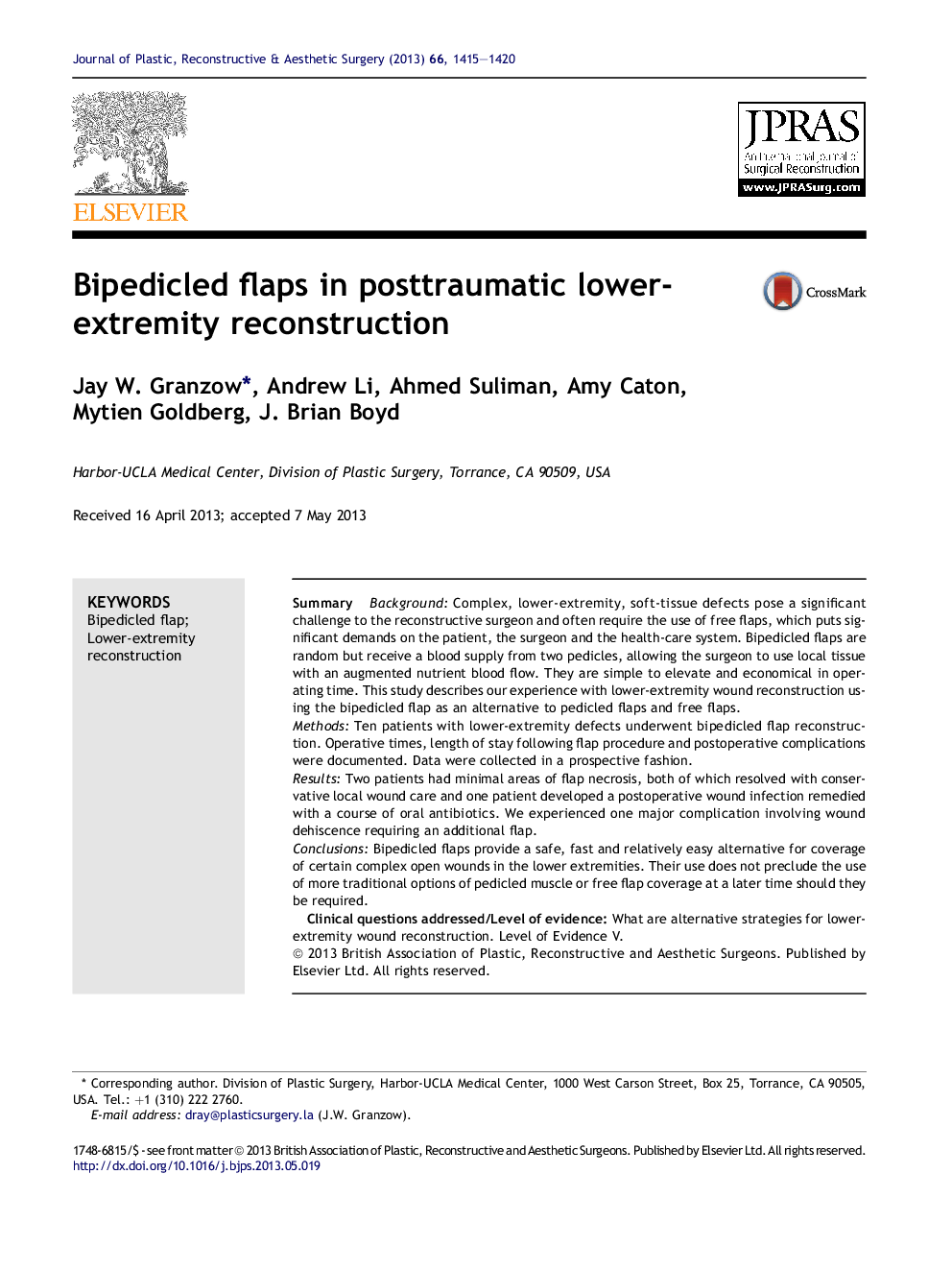| Article ID | Journal | Published Year | Pages | File Type |
|---|---|---|---|---|
| 4118723 | Journal of Plastic, Reconstructive & Aesthetic Surgery | 2013 | 6 Pages |
SummaryBackgroundComplex, lower-extremity, soft-tissue defects pose a significant challenge to the reconstructive surgeon and often require the use of free flaps, which puts significant demands on the patient, the surgeon and the health-care system. Bipedicled flaps are random but receive a blood supply from two pedicles, allowing the surgeon to use local tissue with an augmented nutrient blood flow. They are simple to elevate and economical in operating time. This study describes our experience with lower-extremity wound reconstruction using the bipedicled flap as an alternative to pedicled flaps and free flaps.MethodsTen patients with lower-extremity defects underwent bipedicled flap reconstruction. Operative times, length of stay following flap procedure and postoperative complications were documented. Data were collected in a prospective fashion.ResultsTwo patients had minimal areas of flap necrosis, both of which resolved with conservative local wound care and one patient developed a postoperative wound infection remedied with a course of oral antibiotics. We experienced one major complication involving wound dehiscence requiring an additional flap.ConclusionsBipedicled flaps provide a safe, fast and relatively easy alternative for coverage of certain complex open wounds in the lower extremities. Their use does not preclude the use of more traditional options of pedicled muscle or free flap coverage at a later time should they be required.Clinical questions addressed/Level of evidence: What are alternative strategies for lower-extremity wound reconstruction. Level of Evidence V.
